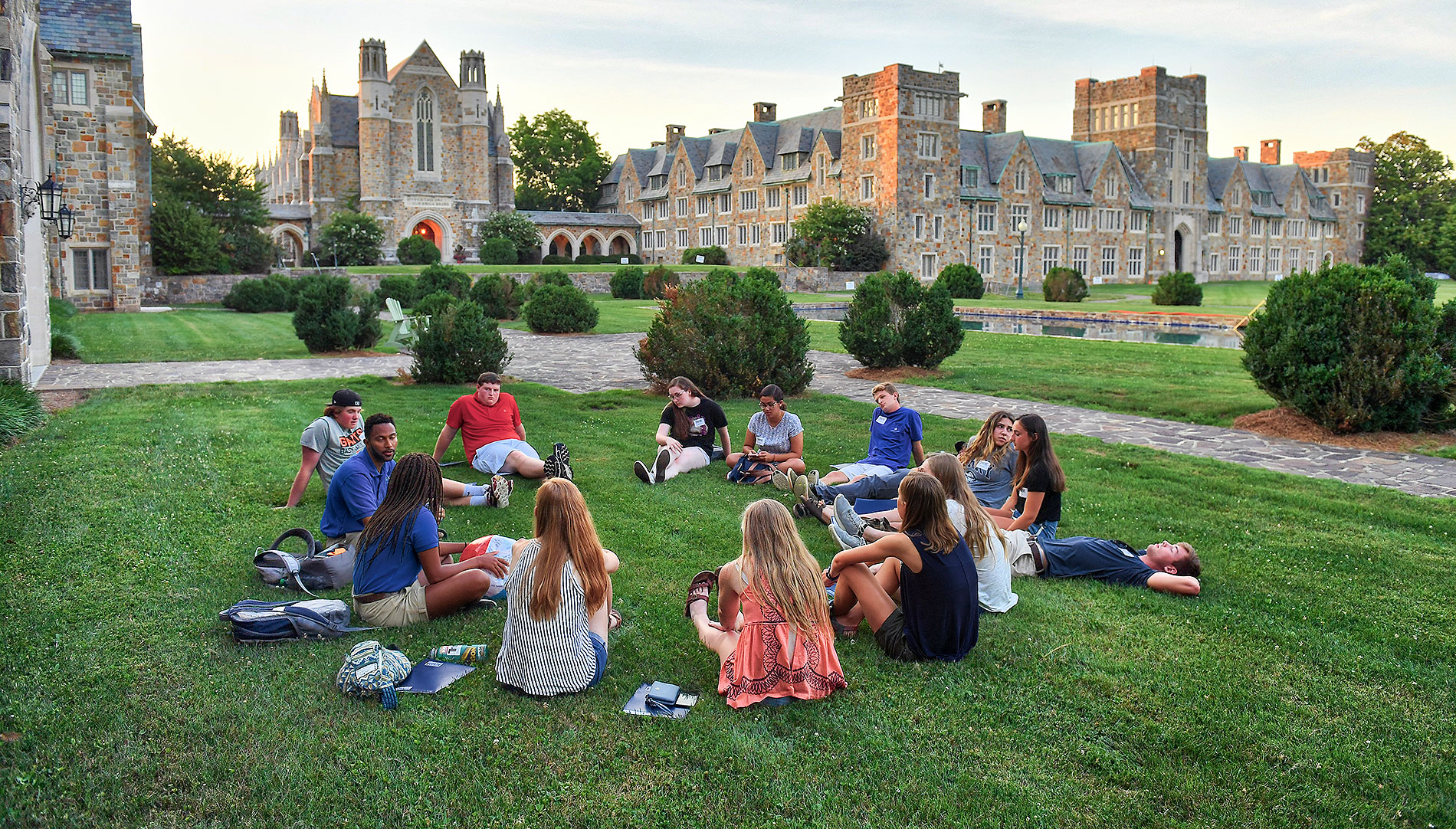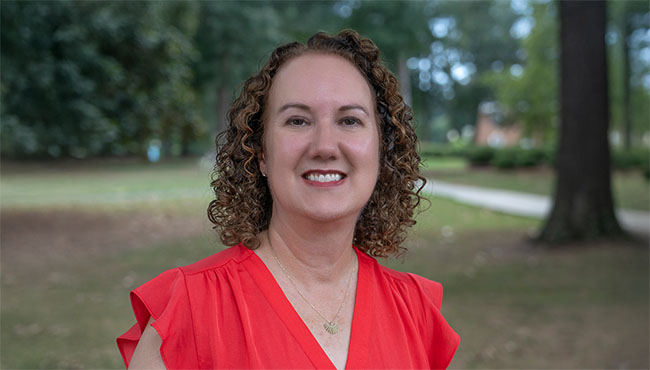College orientation is the moment you finally get to dip your toe into the college experience. Instead of bombarding students with massive amounts of paperwork and rules, colleges introduce the nuts and bolts of college during this special time with fun activities and events. Typically, the goal of orientation is to prepare incoming students for their future college experience by helping them seamlessly join the community. Here’s a quick look at what orientation looks like and a list of the most common orientation experiences for students and their parents or guardians.
WHAT IS IT, AND WHAT DOES IT LOOK LIKE?
College orientation is a chance for incoming students to get to know the ins and outs of college life while building friendships. Depending on the school you are attending and whether you are a first-year student, transfer student or non-traditional student, orientation could take place the summer before you go to school, right before you start classes in the fall or in a two-part orientation where you are required to come in the summer and early in the fall. Berry College uses this two-part orientation to first give students a taste of college before attending, and then they follow up with a separate time in the fall to help students get settled in before classes start.
THE PURPOSE OF ORIENTATION
Typically, orientation is a required part of attending school. However, colleges may have different dates students can attend or may offer something virtual if circumstances prevent a student from attending the sessions offered.
No matter what form your orientation takes, higher education experts strongly recommend that incoming students attend some type of orientation. In fact, research links students who attend orientation with higher college enjoyment and higher grades. It’s the reason most colleges make it mandatory.
Describing how orientation sets students up for success, Assistant Dean of Students Meredith Johnson explains, “Students are more successful when they get connected to faculty, staff and student leaders during orientation. When they arrive at school, they already know a group of people they can individually reach out to for help. Attending orientation is the beginning of building a network of care.”
In other words, college orientation matters because students are more successful when they have a clear expectation of what college will be like. Here are a few different experiences students might have at orientation to make college a reality.
COMMON STUDENT ORIENTATION EXPERIENCES
- Meeting new people – It's time to connect with other students who will be starting with you in the fall!
- Meet advisors and register – Some students sign up for classes as a part of orientation while others receive preassigned schedules they can tweak with their advisors.
- Tour campus again – Get to know where all the most important places and resources are on campus. You might even use your new schedule to find your future classrooms.
- Stay overnight in a dorm with a roommate – Want to measure your closet? Try out the communal bathroom? This is your chance!
- Participate in your college’s traditions – Learn team chants, take special pictures, etc. There are likely special experiences that first-year students at your school take part in every year.
The goal of orientation is truly to “orient” or direct students toward success, and colleges will include helpful information during events and games. But colleges also realize success is more than information, and orientation is a key starting point to building a sense of belonging.
“Orientation is the moment, sometimes the shock, that lets students know they are really here,” says Hunter Perez, who served as the head orientation leader at Berry College in 2022. “Those planning orientations are ready to welcome and guide students through the many emotions they will experience. Quite honestly, orientation leaders are the first connection most students make in college. Whether incoming students utilize us as a resource or not is up to them, but the best part about being an orientation leader is meeting different kinds of students.”
NOT JUST FOR STUDENTS
College orientation also matters for parents and guardians because it helps give them a clearer understanding of where they will be dropping off their students in the fall. College staff members see parents as part of the support team members and cheerleaders for incoming students. Sometimes, however, the transition from captain to team member can be difficult, so colleges often cover this relational transition in orientation material. By offering a series of talks or workshops on college resources, colleges can equip parents and guardians to support their emerging adults. Here are the top 10 topics and resources they are likely to learn about during orientation.
COMMON PARENT ORIENTATION TOPICS
Academic expectations – This area covers how advising and registration work for students each semester. It could also include information about majors and course selection or requirements to keep scholarships.
Academic success resources – Sessions explain the resources available to students when they want or need academic help outside of the classroom. These resources or organizations often include help sessions, subject tutoring, academic coaching and more.
Accessibility resources – If parents have a student who requires special accommodations for their courses, there will be moments and possible sessions that explain the required paperwork and filing to make sure they have access to everything they need. Look for personal contacts and get to know this support staff.
Career resources – Parents and guardians will likely learn about career resources or centers for students. Many colleges suggest students begin building a relationship with this office as early as the first year. Career services typically offer personality tests, resources to help incoming students explore majors and possible career tracks, and tools for professional networking and locating internships and job opportunities. If students anticipate holding a campus job, details may be covered during orientation.
College policies and safety – Each college has a different way to approach rules and policies, but there will be a moment when the college addresses these expectations with parents and guardians.
Dining services – Students and families often have a lot of questions about what is available and during what hours. If incoming students have allergies or dietary needs, these questions and conversations can be addressed in sessions or workshops on dining services.
Financial aid resources – Financial aid resources and staff are there to help families understand their bills and when they must pay regularly. This information includes how to sign in to a financial account and pay. This is not a time to ask for more scholarships or funding, as those opportunities are not available to students until the next year.
Health and wellness centers – At some colleges, parents and guardians may get to visit a health or wellness center. However, colleges also like to include conversations around mental health with wellness. Employees will describe how you can help your students find opportunities on campus for physical fitness and group or individual counseling. Because many students struggle in their first year with maintaining mental and physical health on their own, these can be important campus resources that you can guide your student to rather than jumping in to solve the problem for them.
Student activities resources – Student activities representatives will likely discuss typical experiences for first-year students, including what they struggle with. They may even help parents and guardians consider what to say when they get the inevitable call from a student saying, “I’m lonely.” They will share many opportunities for students to connect through clubs, groups, community service, residential life, etc.
Technology services – Becoming part of a college requires adopting a series of technologies parents, guardians and students may or may not have ever used. Some campuses may run solely on Google products while other campuses run on Microsoft, etc. Some schools may have in-house software resources and may require students to have specific tech tools or software on campus. This introduction can feel daunting, so take good notes and find the point people on campus for helping you understand email, learning platforms, etc.
WHAT TO BRING
It’s likely your college will send you a packing list, but here are a few things to consider bringing along:
- Water bottle
- Sunscreen
- Active clothes and closed-toe shoes
- One nicer outfit
- Pajamas
- Toiletries
- Rain gear
- Phone and charger
- Spending money
- List of questions about college life
- Your favorite place to take notes (e.g., journal, pen, iPad)
GETTING STARTED IN THE RIGHT DIRECTION
College orientation is about getting students (as well as parents and guardians) headed in the right direction when starting college. If anyone feels lost in the newness of the college experience, orientation provides personal contacts in each department so they’ll feel comfortable reaching out and asking for help. Orientation is not about knowing it all. Instead, it is about connecting students and families to the community and resources, so if they ever feel overwhelmed, they know just where to turn.
In the time leading up to orientation, stay on top of college communications that provide details on what to expect. If you have questions about your college orientation experience, contact your admissions counselor. They should be able to direct you to the right resources for registration. Don’t miss out on a lot of fun and an opportunity to start your college experience on the right foot.



